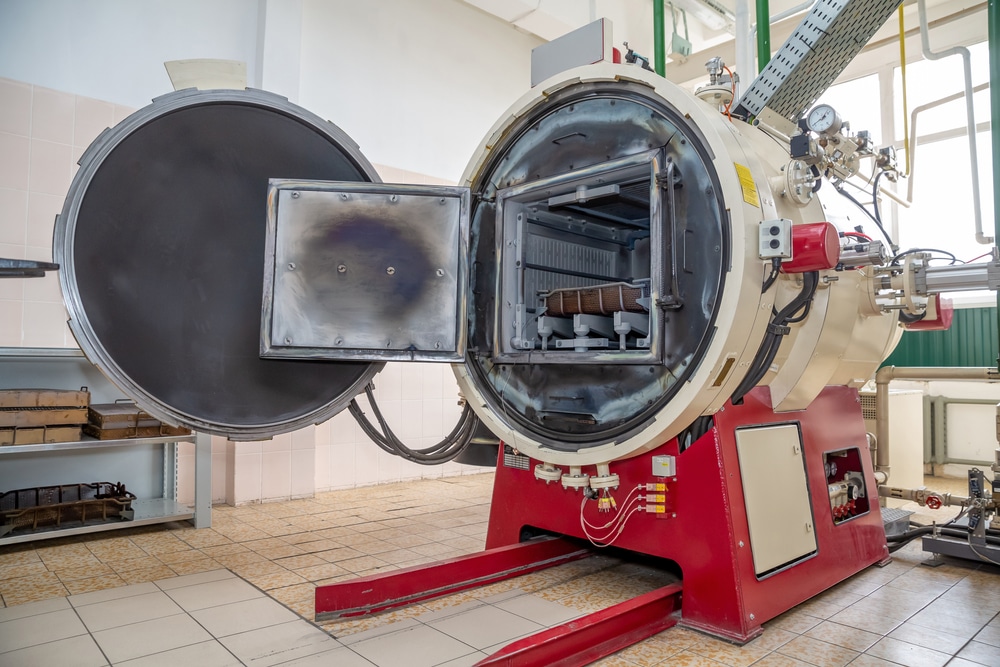Tempering vs. Annealing: Everything You Need to Know
December 13, 2022 | Categorized in: Production

With the relatively small differences in methodology between heat treating techniques, it can be easy to mix them up. Previously, we’ve discussed all of the major ways that steel is heat treated, but two particular ones stand out and get more questions than the others. These two are annealing and tempering, which have several similarities, but also a number of differences that we need to understand before you can decide which is right for your project.
What is the purpose of heat treating methods?
At a high level, heat treating changes the atomic structure of metal to improve certain characteristics such as hardness, ductility, corrosion resistance, and more. Because of its versatility, there are a number of different methods to focus on key properties rather than others. This difference in purpose (depending on what you need for a project) is what primarily influences the difference in methods used.
Basics of each method
However, the two that we’ll be comparing today are annealing and tempering. Each has slightly different purposes, processes, and more, so let’s discuss:
Annealing
One of the primary features of annealing is its slow cooling process, which is done either in the oven it was heated in, or in a material like sand. Unlike some other heat treatments, this process actually reduces its hardness to make the metal more malleable and less brittle. This makes cold working easier and less risky, and can also result in properties like improved electrical conductivity.
Annealing involves three major steps:
- Recovery – the metal is fully heated in a furnace to the specified temperature. This makes the metal “relax” and become more malleable.
- Recrystallization – the temperature is then turned up higher to a critical point that is above the metal’s recrystallization temperature but lower than its melting point. Being held at this temperature allows new grains to develop in the metal’s internal structure.
- Grain growth – once the grains have begun developing, the metal is slowly cooled at a controlled rate, which helps the grains fully develop and results in a more ductile material.
Tempering
Tempering has a similar purpose to annealing, although to a more limited extent. It improves the toughness of a material (the ability to resist fracture, which is measured by Charpy Impact Testing) and reduces excess brittleness after other heat treating processes like hardening. Tempering brings the metal to below its lower critical temperature, or its recrystallization temperature, where it’s held there until a specified amount of time has passed. The metal is then allowed to cool, usually in room-temperature air.
Similarities between annealing & tempering
As you can see, there are a number of similarities between the two methods. Their primary purpose of reducing hardness in metal is the same, and they both are heated before a relatively slow cooling process. While annealing has a slower cooling process than tempering, both are much slower than heat treatments that quench the metal, like hardening.
Differences between annealing & tempering
When it comes to the differences between these two, there are a few major considerations to understand:
Purpose
The purpose of annealing is to make the material softer and more workable, while tempering is primarily used to reduce excess hardness. While this might seem like splitting hairs, annealed metal takes standard metal and makes it more ductile, while tempering is usually done to bring ductility back down after a metal has been additionally hardened. This means that annealed metal is typically more malleable than tempered metal.
Temperature
As mentioned above, tempering holds the metal at a lower temperature because the goal is not recrystallization. Annealing heats up the material to a temperature above its critical point but below its melting point to get the metal’s structure to recrystallize and grow new grains.
Cooling process
While both methods use a more passive and slow way to cool the metal after holding it at the desired temperature than hardening, annealing is significantly slower than tempering. Annealing either shuts the heat off from the furnace, leaving the metal in to slowly cool with the furnace, or is buried in a material like sand that dissipates heat much slower than air.
Visible appearance/color
Beyond the final performance of the metal being different, the appearance of the metal is also likely to be different. Tempering is known to result in a variety of different hues depending on the temperature used, which we’ve covered in-depth here. This means that tempered metal can range from yellow to blueish-green, and gives a distinct look after cooling.
Ensure your steel is ready for the job
If you’re looking for heat treating services, Service Steel is more than happy to help. With almost 60 years in the steel business, we can help you find exactly what you need as quickly as possible. Request a free quote or speak to one of our experts today!
